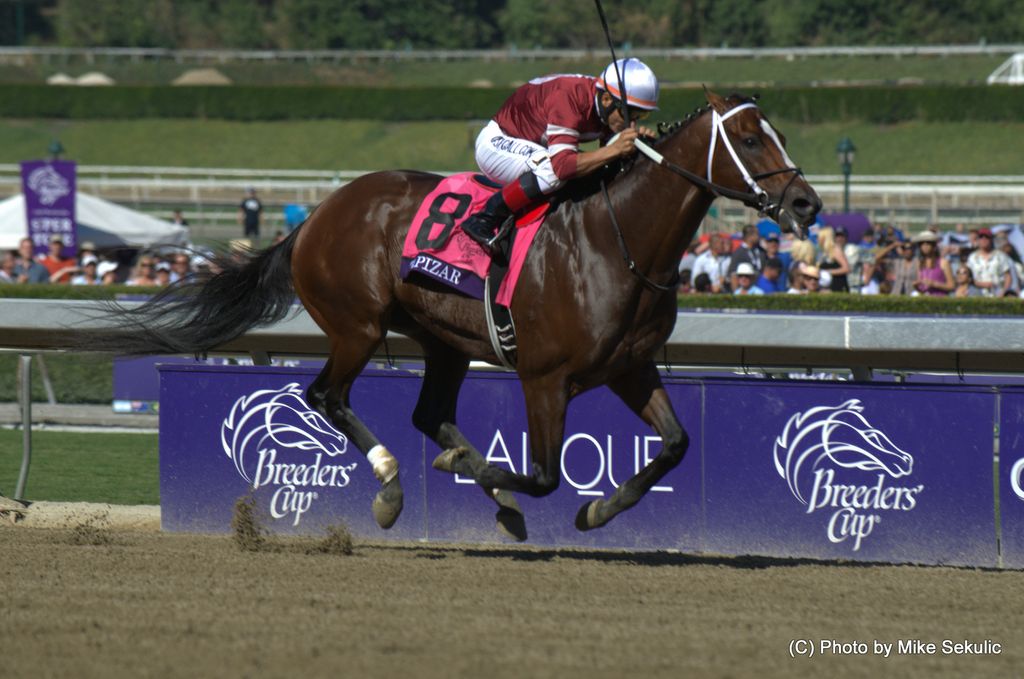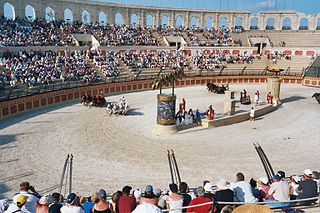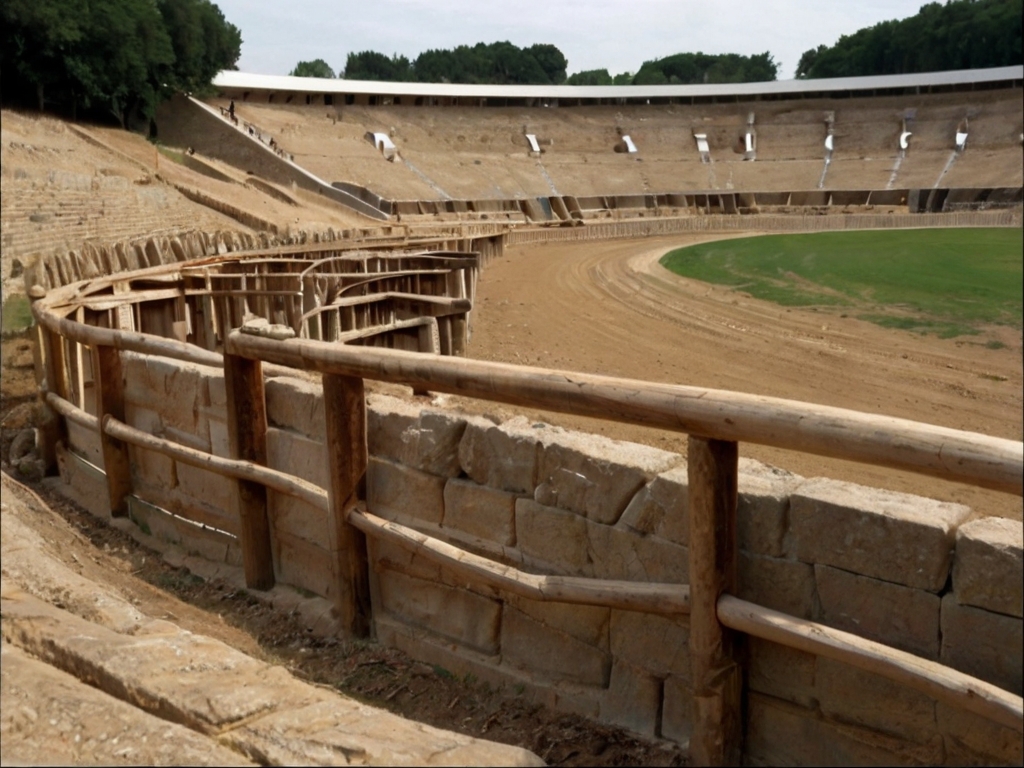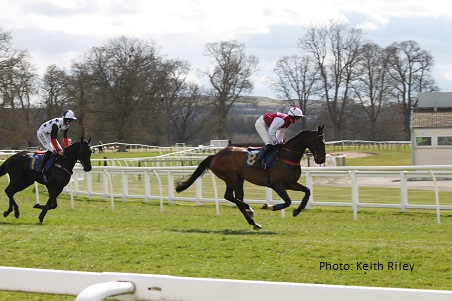The History of Horseracing
A history of horseracing from the ancients to the modern day:
 Modern Day Horse racing
Modern Day Horse racingHorseracing
is a global sport that is watched and enjoyed by millions of men, women,
and children around the world.
But how did it begin and what is the path that it has followed to lead us to the present day?
Read on to discover just how
this once rural pastime became one of the most exhilarating, and popular
sporting events in the world.
Archaeological and historical records give us examples of horseracing as being an extremely popular sport in the times of the Ancient Greeks, The Romans, and the Byzantines and the racing of horses was even a heat in the Olympics in 648 BC.
It was considered a tough sport requiring high levels of endurance and risk taking from jockeys.
Variations included chariot racing, mounted horse racing, and even rider-less racing, and they soon became important parts of recreation in many global cultures.
 Chariot Racing
Chariot RacingArchaeological evidence for horse racing prior to the 17th century is scattered and multifaceted, requiring various pieces to paint a complete picture. Here's a breakdown of the different types of evidence:
Physical Remains:
- Hippodromes: While often associated with chariots, some Roman hippodromes also had starting gates and turning posts, suggesting potential use for horseback riding competitions. The Hippodrome of Constantinople offers a possible example.
- Chariot Racing Tracks: These structures, found across civilizations like Assyria, Greece, and Rome, could have been adapted for horseback riding in later periods, though direct evidence is lacking.
- Horse burials: Elaborate horse burials found in cultures like Scythians and Huns might hint at prized steeds used in competitions, though definitive proof of racing is absent.
- Horse tack and equipment: Bits, stirrups, and other riding equipment with designs suggesting speed and control could be interpreted as racing-related, but the context is crucial.
Artistic Depictions:
- Rock art: Petroglyphs and paintings depicting horses in running postures or with riders might imply racing, but cultural interpretations are challenging.
- Pottery and sculpture: Depictions of horses in dynamic movement or with riders engaging in competition could be indicative of racing, requiring careful analysis of context and artistic traditions.
Textual Evidence:
- Literary sources: References to horse races can be found in ancient texts like the Hittite Code, the Iliad, and even the Bible, though interpretations of "racing" need to consider cultural context and terminology.
- Historical records: Mentions of specific events or competitions involving horses might exist, but differentiating races from other equestrian activities requires careful examination.
Challenges and Considerations:
- Difficulties in dating: Precise dating of archaeological finds is crucial, and establishing their connection to horse racing specifically can be challenging.
- Alternative interpretations: Many of these findings could have alternative explanations unrelated to racing, necessitating contextual and comparative analysis.
- Varying definitions: The concept of "horse racing" itself might have differed across cultures and time periods, complicating interpretations.
Overall:
While definitive archaeological proof for horse racing in every period before the 17th century might be elusive, various pieces of evidence, when carefully analyzed and interpreted in context, can paint a suggestive picture of its existence across cultures and eras. Further research and discoveries might refine this understanding in the future.
 Ancient Hippodrome
Ancient HippodromeHistory of horseracing in 17th c
By the 17th Century, horse riding had become immensely popular with various Royal Families, and the sport was starting to be considered as one for the aristocracy- rather than just the man on the street.
It became known as “The Sport of Kings” and incredible levels of detail, planning, and technical acumen were put into every aspect from breeding, to training, to even the diet of the horses involved.
This level of professional detail is something that is still an integral part of racing strategy today and often, viewers, spectators, and gamblers do not realise the amount of science, maths, and biological preparation that is needed before a big race.
 Jumps Racing in Scotland
Jumps Racing in ScotlandProducing a modern thoroughbred racehorse involves a complex interplay of science, math, and biology. Here's a summary of the key aspects:
Genetics:
- Pedigree analysis: Breeders use historical performance data and genetic markers to select stallions and mares with the desired traits, using complex calculations and statistical analysis.
- DNA testing: Advanced techniques like microsatellite genotyping and whole-genome sequencing help identify genetic markers linked to performance and disease resistance.
- Selective breeding: The history of horse racing originated through an understanding of complex inheritance patterns and applying a growing knowledge of dominant and recessive traits for targeted breeding programs.
Nutrition and Physiology:
- Dietary science: Formulating tailored diets based on caloric needs, nutrient balance, and individual horse's metabolism, utilizing knowledge of equine digestive systems and energy requirements.
- Bloodwork and metabolic analysis: Monitoring hormone levels, electrolyte balance, and other markers to optimize training and nutrition based on individual physiology.
- Equine exercise physiology: Applying principles of muscle function, energy production, and recovery to design effective training programs for speed, endurance, and injury prevention.
Biomechanics and Locomotion:
- Kinematic analysis: Video and motion capture technology assess stride patterns, joint angles, and forces exerted, allowing for adjustments in training and equipment for optimal performance.
- Equine biomechanics: Understanding forces, stresses, and energy transfer within the horse's body during movement to prevent injuries and maximize efficiency.
- Farriery and hoof care: Applying knowledge of biomechanics and anatomy to design custom-made horseshoes that support proper weight distribution and movement.
Other Scientific Disciplines:
- Veterinary medicine: Regular health checks, preventative measures, and treatment of injuries require expertise in anatomy, pharmacology, and surgery.
- Data analysis and statistics: Training data, performance metrics, and genetic information are analyzed to optimize breeding decisions and training programs.
- Psychology and behavioral science: Understanding equine behavior and applying learning theory to manage stress, build trust, and improve trainability.
Math plays a crucial role in calculations related to genetic analysis, nutrition planning, training program design, and performance analysis.
Nowadays, the sport is accessible to all. Events such as The Cheltenham Festival, The Grand National, The Kentucky Derby, and The Royal Ascot all dominate the global racing calendar.
Hardened race-goers make annual pilgrimages to place bets, see their favourite horses, and even just soak up the atmosphere of these prestigious events.
So far, the advent of technology has meant that keeping up to date with the latest events is easy and never further away than the tip of your fingers.
You can check the latest wins and losses on various apps, consider the odds online, and check out schedules for events such as The Cheltenham Festival online.
So, what is in store for the future of horse racing? Will we one day see bionic horses or jockeys? 3D or virtual reality events?
What may sound ridiculous now could well be common place in 10, 50, or 100 years’ time.
Back to horse-racing from history of horseracing

